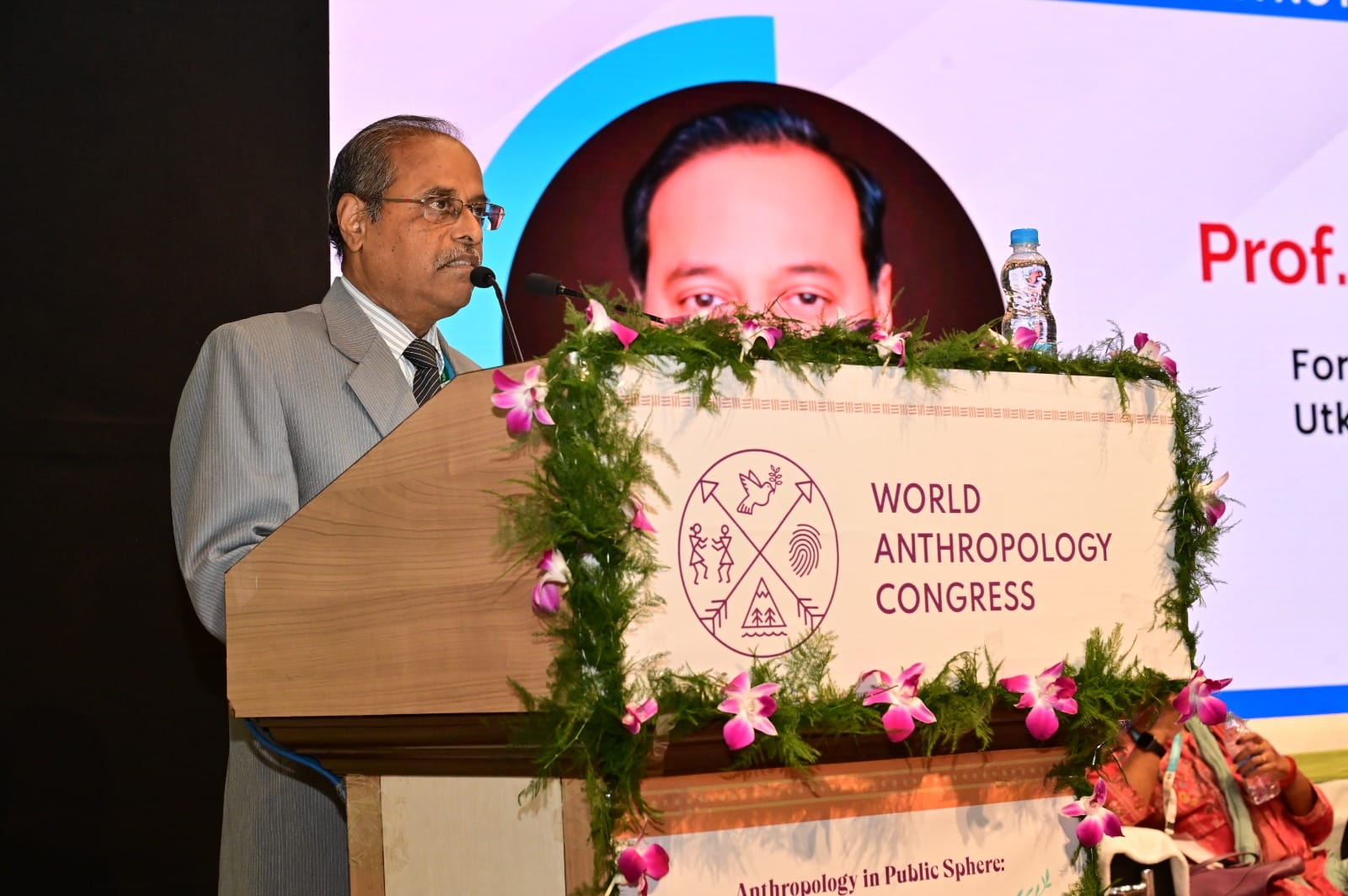The concept of communication is integral to anthropological knowledge generation and its applications, and has always been a part of anthropological explorations. Edward Sapir’s (1931:4) article on “communication” in the Encyclopaedia of Social Sciences observed, “every cultural pattern and every single act of social behaviour involves communication in either an explicit or implicit sense”.
In 1952, Vienna International Congress of Anthropological and Ethnological Sciences (ICAES) discussed anthropology on the celluloid establishing anthropology’s keen interest in communication. Levi-Strauss (1953) also talked about multiple layers of interactions between culture and communication. A Committee on Ethnographic Films was constituted in Paris, and a session on Ethnographic Films was organized as a part of the ICAES held in Paris in 1960.
However, it took another 13 years before a session was organized on Visual Anthropology during the 1973 Chicago, Congress. Visual anthropology was discussed as a function of preservation and communication through the use of films, videotapes, and televisions. ARN Srivastava (2005) has listed Visual Anthropology as one of the new subfields of anthropology. Cyril Belshaw, a Canadian anthropologist wrote in 1978 about International communication and anthropology. He took communication as a tool for the wider dissemination of research knowledge and research ideas through vervo-visual and computer-based technology. In India also, the Anthropological Survey of India and the Indian National Trust for Art and Cultural Heritage (INTACH) organised an international conference on Visual anthropology at Jodhpur from December 15-19, 1987.
The history of Communication Anthropology goes back to mid-1970 when the author along with a team of other anthropologists, conducted a study on social evaluation of Satellite Instructional Television Experiment (SITE). SITE was world’s largest techno-social experiment carried out by the Indian Space Research Organisation (from August 1975 to July 1976) taking forward the vision of Dr. Vikaram Sarabhai, the space man of India. SITE used NASA’s satellite to take development communication directly from Delhi and Ahmedabad to 2400 villages in six states of India. Along with learning the management capabilities of space as well as ground segments, operation of the direct telecast system, SITE also evaluated its social impact for which a dozen of trained anthropologists and more than 100 other social scientists were involved in various components of its evaluation.
ISRO organized a special session on communication anthropology during the Ethnographic and Folk Culture Society Annual Conference, held at Lucknow in 1975. Panellists discussed learnings from their ethnographic studies carried out in different states of India as part of the SITE evaluation. These efforts led to thinking of teaching Communication anthropology in several university departments of anthropology in India.
In mid-seventy’s, several anthropologists moved to mass media organisations like All India Radio, Doordarshan, Indian institute of Mass Communication, and Indian Space Research Organization. It merits mention that in all these organizations, the communication units were headed by anthropologists. This provided further thrust to communication anthropology in India. There has been no looking back in the last three decades.
However, the communication revolution brought another transition in the history of communication. Launch of the Indian National Satellite (INSAT) in 1982, along with liberalized import policy, greater sensitivity to market signals, and liberalized rules of entry and growth for the industry led to a rapid transformation from grainy black-and-white televisions to sharp colour televisions in India. It favoured the introduction of soap operas and commercial advertisements on Indian television. It also changed the system of regulatory controls on Indian communication systems. The booming commercial value of media overshadowed communication and some anthropologists also started talking about Media Anthropology.
It is of relevance to make distinction between Communication Anthropology and Media Anthropology. Media anthropology, within the schools and departments of social or cultural anthropology in India, uses qualitative methods, particularly ethnography as a means of understanding Production, Audiences, Consumption and other cultural and social requisites for mass media. They covered ethnographies of media production, journalists in the field, media reception, while systematically and scientifically mapping audience preferences and choices.
Anthropologists often use unique characteristics of anthropological methodology to study media. One such commendable study is by Mankekar (1999). She uses method of ethnography to studies the crucial function of television-viewing in India and analysed its contribution in shaping women’s place in the family, community, and nation. Her study examines, how television viewing has played a significant role in the realignment of class, caste, consumption, religion, and politics. She examined both “entertainment” narratives and advertisements designed to convey particular ideas about the nation. Similarly, Mehta (2004) studied the influence of television on traditional assumptions on the lives of Muslim women in a Delhi neighbourhood.
Ginsburg, Abu-Lughod, and Larkin (2002) talks about the new area in anthropology that examines how, why, and the way media works – the Film, Television, Video, and Radio media, and other forms of visual media. Drawing on a wide range of archival sources and ethnographic methods Khanduri (2014)(i) in her book explores the past and present meanings and uses of newspaper cartoons in India. To me, media anthropology represents a mode of western thought, reflecting the individualistic society where societal communication is weak. It is largely urban centric and ignores traditional modes of communications that are predominantly determined by local cultural contexts. In the era of cyber spaces and present context, social media has emerged as another manifestation of oral tradition and free flow of the ideas and liberation from the controlled mode of communication. Now the control has gone. This has made anthropological epistemology and methodology of holistic understanding extremely relevant to study the use and impact of social media. It also brings back cultural context of communication without being vanquished by power of media.
For decades, we are debating, how over-dependence on media has created communication gaps in the last mile delivery of the development programmes. Invariably these have failed to make its impact on the marginalized rural, tribal, and isolated communities in India due to lack of cultural communication connect. Media uses mediated as well as directed information flow and its control and commercial use is best not discussed. There is no denying that operationalizing development narrative using media studies is easy, but there are no shortcuts for quality research or research-based applications of knowledge.
Communication anthropology belongs to another genre: Here media is counted as a component of communication, a vehicle that takes the message to the target population. Communication anthropology goes much beyond the media. It covers communication by nature, the cultural metaphors that are loaded on the media, social and cultural context of the source, medium, and the recipients of the messages. Even the impact of communication is seen in its totality – the value, the practices, the access, the penetration, the comprehension, the credibility, the response, and the acceptance or rejection of the message attributed to one factor or the other.
In developing societies like India and other countries, media still has not reached all geographical areas or population. Still, we have media dark areas or now connectivity dark areas in some parts of the states. But all these societies have a strong tradition of people-to-people (P2P) communication where any information vertically through media travels through horizontal communication to cover the last mile. In the absence of connectivity, communication anthropology works and not media anthropology!
Anthropology and communication are intimately connected. In my course on ‘Social Sciences and Communication,’ I teach how anthropology has significantly influenced studies in communication. Anthropological epistemology helps comprehending communication and its manifestations in different contexts because communication is often culture-bound (Sinha 2010). Let us not forget that irrespective of media onslaught communications in contemporary societies continue to be culturally constructed. Thus, Communication Anthropology and not Media anthropology is the need of hour!
by
Arbind Sinha
Advisor MICA, Ahmedabad
REFERENCES:
Agrawal, Binod C. 2003). Applications of Anthropology Documenting India’s Cultural Heritage for Posterity: The Use of Communication Anthropology. Thirteenth Verrier Elwin Endowment Lectures. Shillong: North –Eastern Hill University Publications.
Ginsburg, Faye D., Abu-Lughod Lila, and Larkin, Brain (editors). 2002. Media Worlds
Anthropology on new terrain. California: University of California Press.
Khanduri, Ritu 2014. Caricaturing Culture in India: Cartoons and History of the Modern World. Cambridge: Cambridge University Press.
Levi-Strauss, Claude 1953. ‘Social Structure’. In Anthropology Today. A.L.Kroeber, (ed.), pp. 524-53. Chicago: University of Chicago Press.
Mankekar, Purnima 1999. Screening Culture, Viewing Politics: An Ethnography of Television, Womanhood, and Nation in Postcolonial India. Durham: Duke University Press.
Mehta, Shalina 2010. Commodity Culture and Porous Socio-Religious Boundaries: Muslim Women in Delhi. South Asia Research. Vol. 30(1). New Delhi: SAGE Publications
Sapir, Edward 1931. Communication. In Encyclopaedia of Social Sciences, Volume 4, pp. 78-91. New York: Macmillan Press.
Sinha, Arbind (2010). Communication Anthropology: the Writing on the Wall, The Eastern Anthropologist Vol. 62(4):511-525.
Vidyarthi, L.P. 1978. Rise of World Anthropology. New Delhi: Concept publishing Company.
(i) This is impressive piece of scholarship in its own right. Drawing on a wide range of archival sources and ethnographic methods, the book explores the past and present meanings and uses of newspaper cartoons in India.






